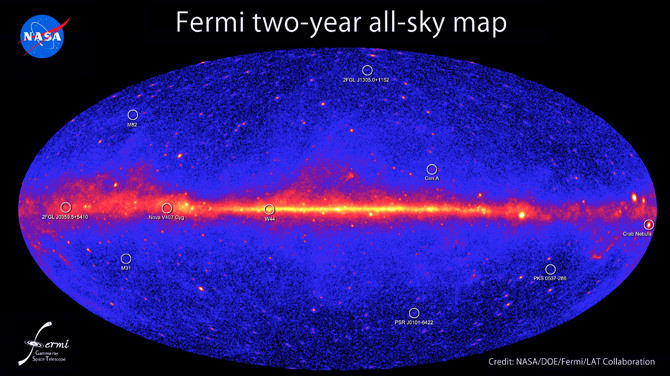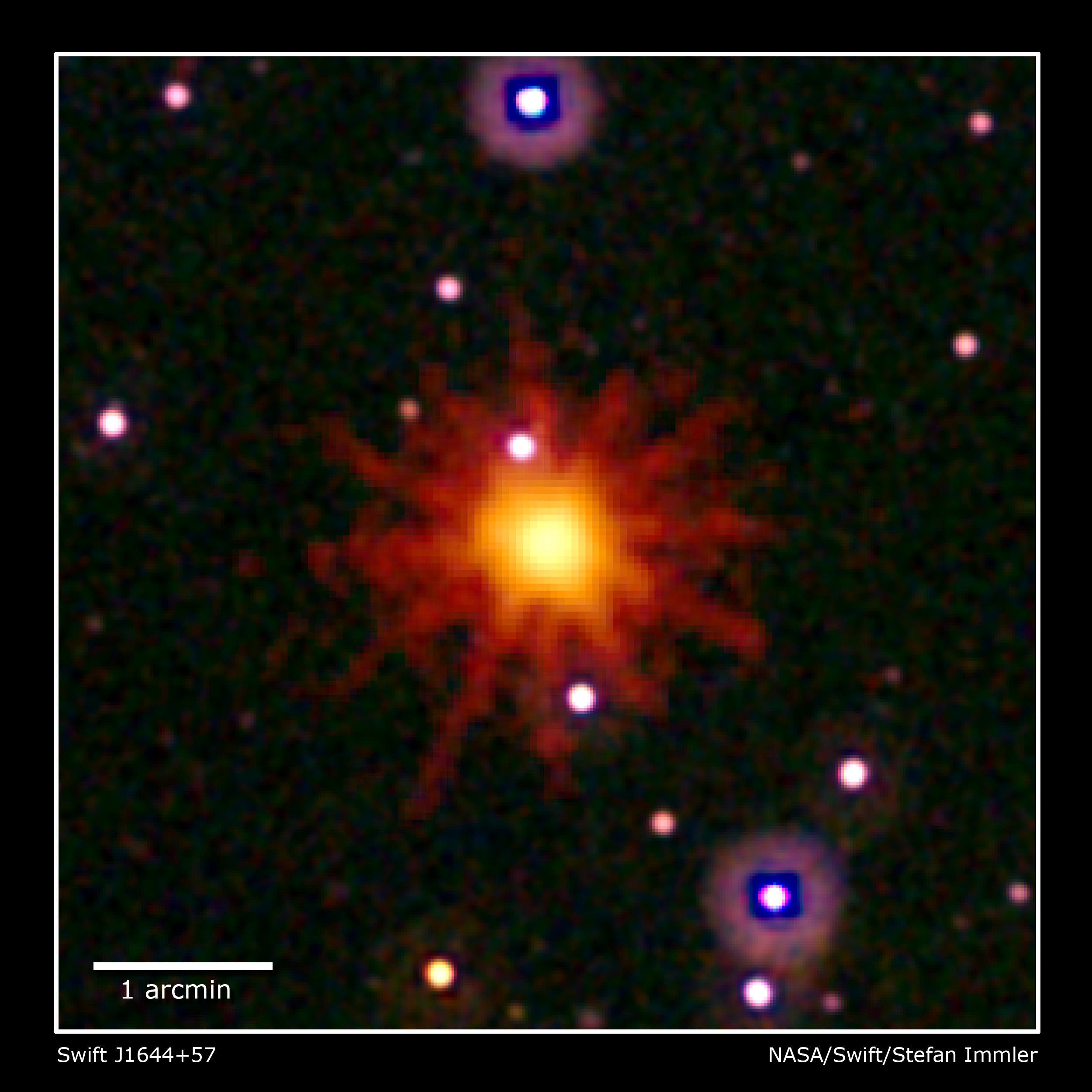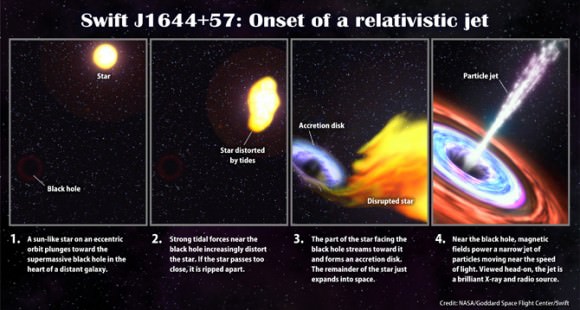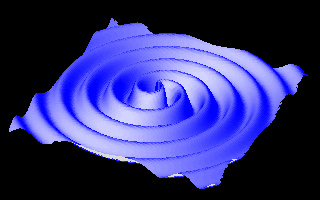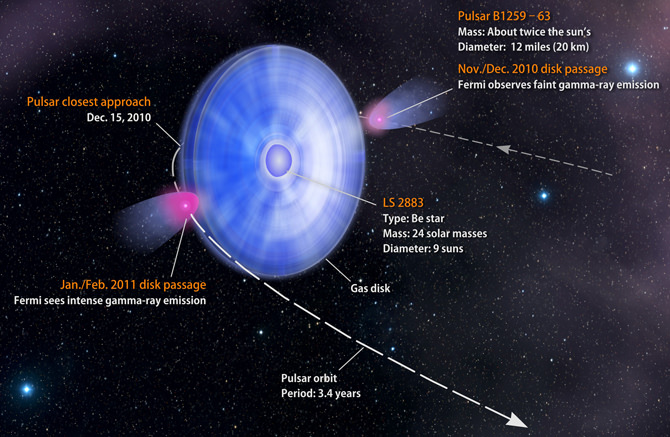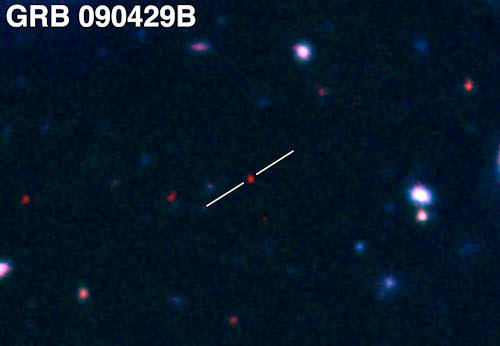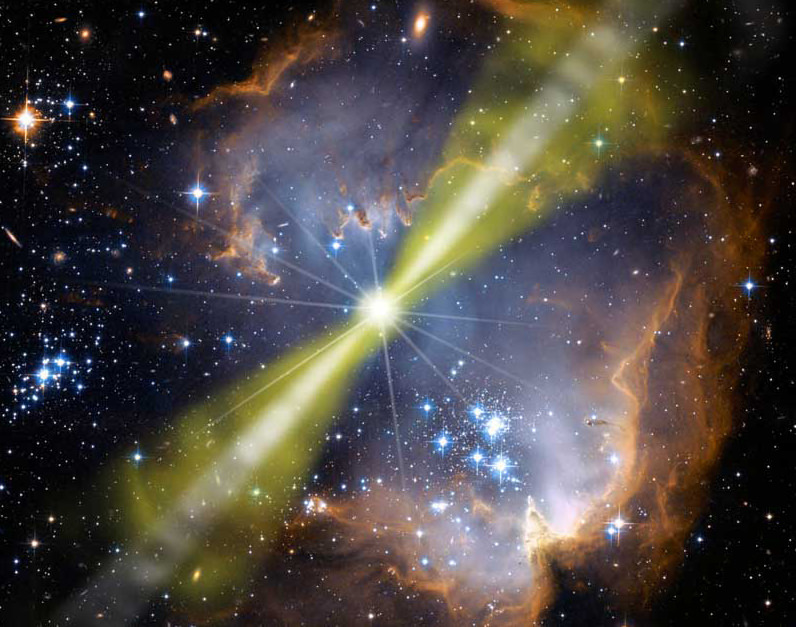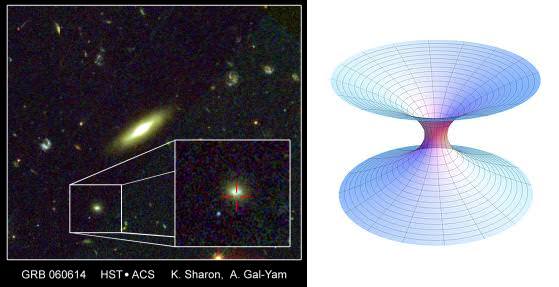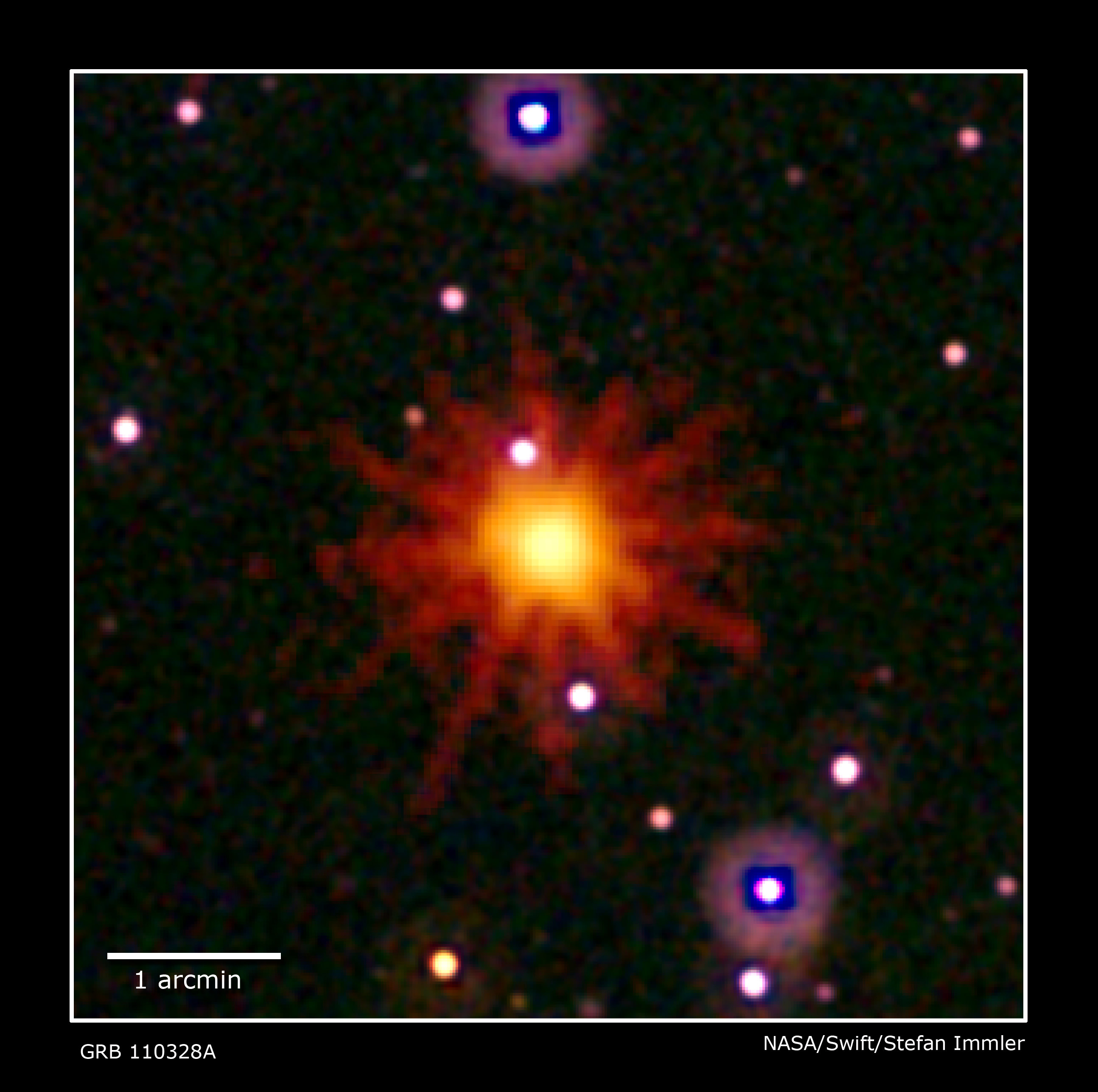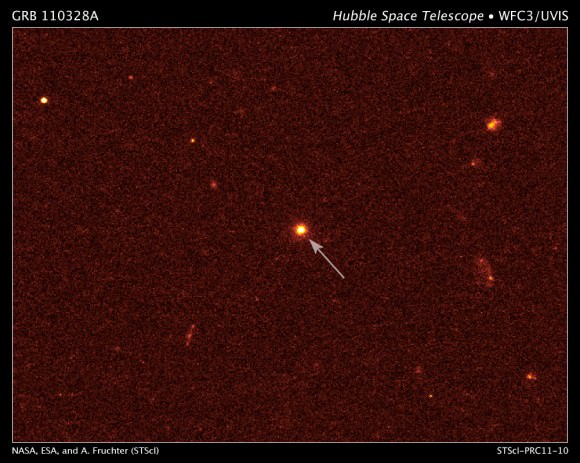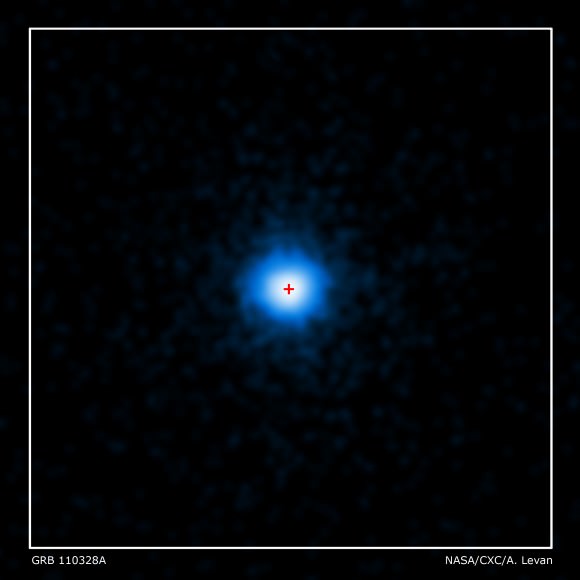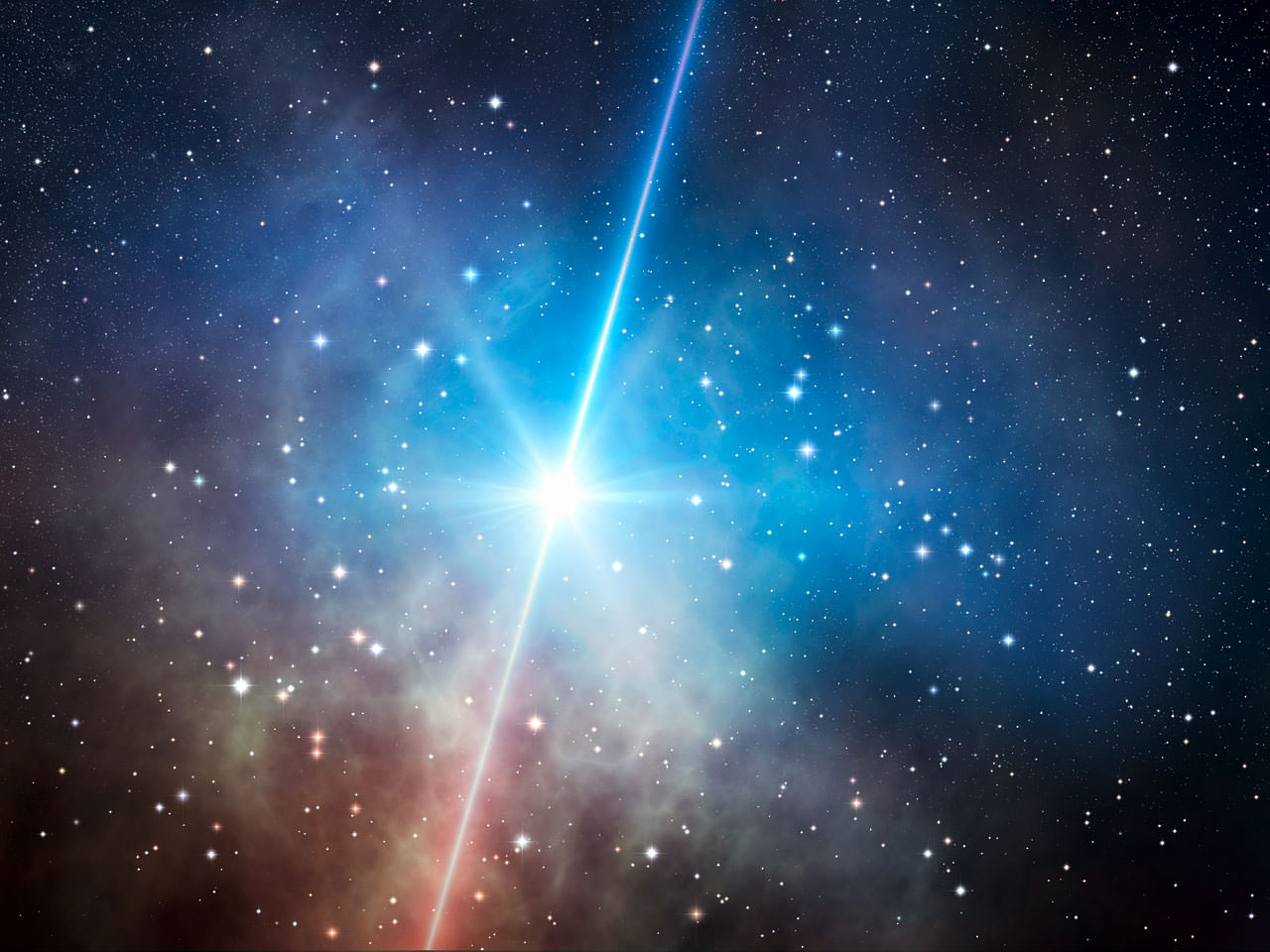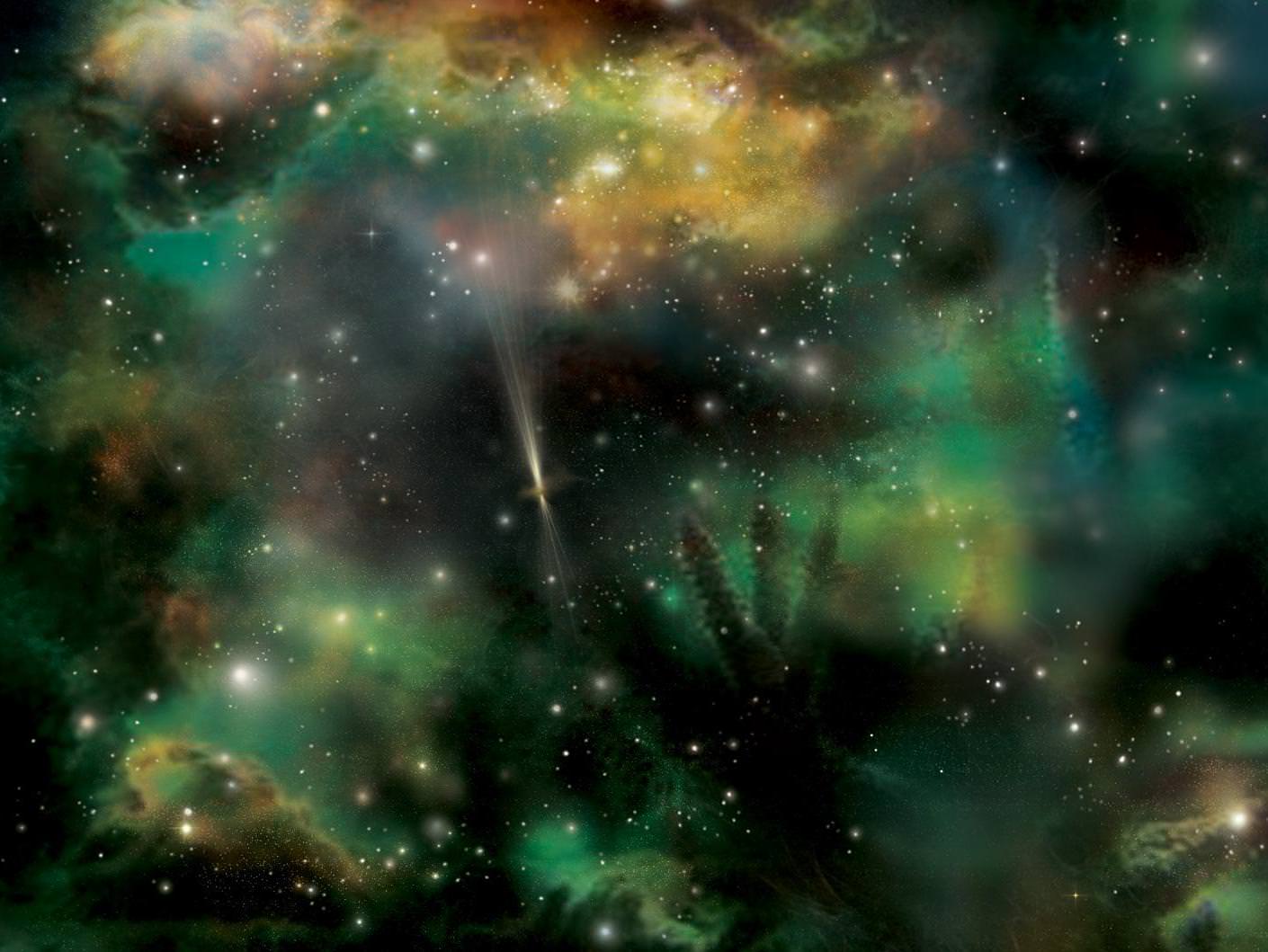[/caption]
Dark energy… We’re still not exactly sure of what it is or where it comes from. Is it possible this mysterious force is what’s driving the expansion of the Universe? A group of astronomers from the universities in Warsaw and Naples, headed by Dr. Ester Piedipalumbo, are taking a closer look at a way to measure this energetic enigma and they’re doing it with one of the most intense sources they can find – gamma-ray bursts.
“We are able to determine the distance of an explosion on the basis of the properties of the radiation emitted during gamma-ray bursts. Given that some of these explosions are related to the most remote objects in space that we know about, we are able, for the first time, to assess the speed of space-time expansion even in the relatively early periods after the Big Bang,” says Prof. Marek Demianski (FUW).
What spawned this new method? In 1998, astronomers were measuring the energy given off by Type Ia supernovae events and realized the expelled forces were consistent. Much like the standard candle model, this release could be used to determine cosmic distances. But there was just one caveat… The more remote the event, the weaker the signature.
While these faint events weren’t lighting up the night, they were lighting up the way science thought about things. Perhaps these Type Ia supernovae were farther away than surmised… and if this were true, perhaps instead of slowing down the expansion of the Universe, maybe it was accelerating! In order to set the Universal model to rights, a new form of mass-energy needed to be introduced – dark energy – and it needed to be twenty times more than what we could perceive. “Overnight, dark energy became, quite literally, the greatest mystery of the Universe,” says Prof. Demianski. In a model put forward by Einstein it’s a property of the cosmological constant – and another model suggests accelerated expansion is caused by some unknown scalar field. “In other words, it is either-or: either space-time expands by itself or is expanded by a scalar physical field inside it,” says Prof. Demianski.
So what’s the point behind the studies? If it is possible to use a gamma-ray burst as a type of standard candle, then astronomers can better assess the density of dark energy, allowing them to further refine models. If it stays monophonic, it belongs to the cosmological constant and is a property of space-time. However, if the acceleration of the Universe is the property of a scalar field, the density of dark energy would differ. “This used to be a problem. In order to assess the changes in the density of dark energy immediately after the Big Bang, one needs to know how to measure the distance to very remote objects. So remote that even Type Ia supernovae connected to them are too faint to be observed,” says Demianski.
Now the real research begins. Gamma-ray bursts needed to have their energy levels measured and to do that accurately meant looking at previous studies which contained verified sources of distance, such as Type Ia supernovae. “We focused on those instances. We knew the distance to the galaxy and we also knew how much energy of the burst reached the Earth. This allowed us to calibrate the burst, that is to say, to calculate the total energy of the explosion,” explains Prof. Demianski. Then the next step was to find statistical dependencies between various properties of the radiation emitted during a gamma-ray burst and the total energy of the explosion. Such relations were discovered. “We cannot provide a physical explanation of why certain properties of gamma-ray bursts are correlated,” points out Prof. Demianski. “But we can say that if registered radiation has such and such properties, then the burst had such and such energy. This allows us to use bursts as standard candles, to measure distances.”
Dr. Ester Piedipalumbo and a team of researchers from the universities in Warsaw and Naples then took up the gauntlet. Despite this fascinating new concept, the reality is that distant gamma-ray bursts are unusual. Even with 95 candidates listed in the Amanti catalogue, there simply wasn’t enough information to pinpoint dark energy. “It is quite a disappointment. But what is important is the fact that we have in our hands a tool for verifying hypotheses about the structure of the Universe. All we need to do now is wait for the next cosmic fireworks,” concludes Prof. Demianski.
Let the games begin…
Original Story Source: University of Warsaw Press Release. For Further Reading: Cosmological models in scalar tensor theories of gravity and observations: a class of general solutions.


